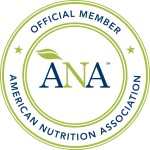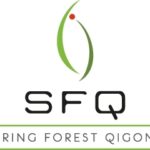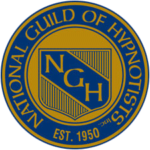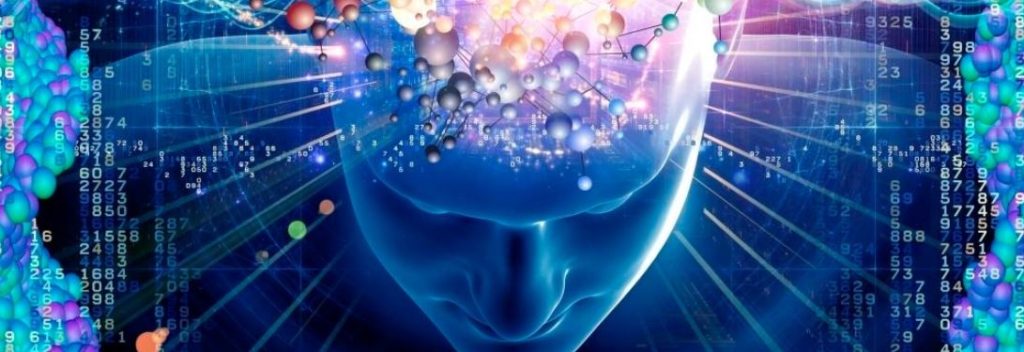
This article aims to shed some light on the history of Applied Kinesiology (AK) and muscle testing.
I have been mentored by multiple health practitioners, each with 15+yrs of experience, some with over 30 years of experience whom, after years of practice, discovered that the client’s body already knows what it needs. They stopped relying on their own knowledge and judgment and started listening to the client’s own body and sunconscious mind using AK.
I bring my skill of communicating with the subconscious mind and unconscious mind (via AK) and merge that with my education in nutrition, herbalism, hypnosis, and bodywork to customize to you what your uniquely need.
A number of healing modalities exist that rely on communicating with the Autonomic Nervous System (using biofeedback assessment, neurological reflex testing, and muscle testing or kinesiology). This article offers you a quick and easy glimpse into some of the most popular modalities used by healers such as nutritional coaches, chiropractors, herbalists, and holistic or integrative medical doctors.
Every one of the techniques listed below have a specific and unique “system” for approaching assessment, followed by a system or path to healing. They all share in that they rely on the feedback the practitioner receives from the Autonomic Nervous System, or the subconscious mind and the body.
These modalities communicate with the Unconscious Mind. Emotional or energetic stored energy or blockages are a part of the areas these systems test for.
Often these therapies work with the clients’ emotional or psychological state. Emotions, trapped emotions in the body, trauma, and beliefs are types of “energy” that commonly result in a disease states. As a MindBody holistic healing practitioner myself (unlike Allopathic medicine), I see no dividing line between the mind and body, between working with the mind to heal the body, and inversely, working with the body to heal the mind.
As I demonstrate in this article, while the terminology might differ, the underlying principles utilized in these therapeutic modalities are closely related.
Some of these systems focus more on the mind (emotions and beliefs), others focus more on the body (emotions stored in the body, physical pain), others focus on nutritional and sensitivity testing. Your practitioner might practice more than one system to deliver to you the healing you need.Some systems such as NAET or PSYCH-K and Body Code can improve all the aspects of the mind-body from physical pain and illness, food sensitivities, to emotional trauma.
It is important to note that ancient health systems, also relied on the use of the body as a communication tool to gain insights. This is how the Chinese energy meridian system was discovered. AK is a more modern manifestation of an ancient skill that allows a practitioner to listen to information that is unconscious to the client.
I am certified in Psychological Kinestiology PSYCH-K and have training in Behavioral Kinesiology, Applied Kinesiology, Psychokinesiology, Emotion Code and Body Code along with mentoring and coaching by multiple well-seasoned mental and physical health practitioners in the art of Applied Kinesiology. My mentors’ combined years of experience add to more than 100yrs. I have been practicing AK with clients for 5 years.
Applied Kinesiology (AK)
Applied Kinesiology was founded in 1964 by the American chiropractor Dr. George Goodheart and are now used by chiropractors, osteopaths, medical doctors, dentists and others with a license to diagnose. Dr. George Goodheart found that evaluation of normal and abnormal body function could be accomplished by using muscle tests. Since the original discovery, the principle has broadened to include evaluation of the nervous, vascular, and lymphatic systems, nutrition, acupuncture, and cerebrospinal fluid function.
A.K. is an interdisciplinary approach to health care which draws together the core elements of the complementary therapies, creating a more unified approach to the diagnosis and treatment of functional illness.
It uses functional assessment measures such as posture and gait analysis, manual muscle testing as functional neurologic evaluation, range of motion, static palpation, and motion analysis. These assessments are used in conjunction with standard methods of diagnosis, such as clinical history, physical examination findings, laboratory tests, and instrumentation to develop a clinical impression of the unique physiologic condition of each patient, including an impression of the patient’s functional physiologic status. When appropriate, this clinical impression is used as a guide to the application of conservative physiologic therapeutics.
In applied kinesiology a close clinical association has been observed between specific muscle dysfunction and related organ or gland dysfunction. This viscerosomatic relationship is but one of the many sources of muscle weakness. Placed into perspective and properly correlated with other diagnostic input, it gives the physician an indication of the organs or glands to consider as possible sources of health problems.
The origin of contemporary applied kinesiology is traced to 1964 when George G. Goodheart, Jr., D.C., first observed that in the absence of congenital or pathologic anomaly, postural distortion is often associated with muscles that fail to meet the demands of muscle tests designed to maximally isolate specific muscles. He observed that tender nodules were frequently palpable within the origin and/or insertion of the tested muscle. Digital manipulation of these areas of apparent muscle dysfunction improved both postural balance and the outcome of manual muscle tests. Goodheart and others have since observed that many conservative treatment methods improve neuromuscular function as perceived by manual muscle testing. These treatment methods have become the fundamental applied kinesiology approach to therapy. Included in the A.K. approach are specific joint manipulation or mobilization, various myofascial therapies, cranial techniques, meridian therapy, clinical nutrition, dietary management, and various reflex procedures. With expanding investigation there has been continued amplification and modification of the treatment procedures. Although many treatment techniques incorporated into applied kinesiology were pre-existing, many new methods have been developed within the discipline itself
Touch for Health
Dr. John Thie, DC, systematized kinesiology for the lay person, making simple and practical techniques that anyone can learn to help themselves and their families and friends be balanced, healthier and happier. He wrote the book Touch for Health.
Behavioral Kinesiology (BK), A.K.A Life-Energy Analysis
Behavioral Kinesiology is an integrated system for assessing and evaluating the effects of all stimuli, internal and external, on the body, enabling us to arrive at a new understanding and synthesis of the integrative action of the body energy system.
Dr. John Diamond developed what he termed “Life-Energy Analysis” in the 1970s. Diamond was the first medical doctor trained in applied kinesiology to become a Diplomate of the International Board of Applied Kinesiology (1976). Behavioral Kinesiology was developed by John Diamond, M.D., and is based upon his many years of practice in psychiatry, preventive medicine, psychosomatic medicine and his association with Dr. George Goodheart’s work in applied kinesiology. As well, Behavioral Kinesiology arose out of Dr. Diamond’s deep, long-standing interest in the humanities, particularly in the role of artistic expression and creative impulses in the therapeutic situation.
This discipline leads to an easy assessment of the degree of stress under which an individual is functioning and total assessment of his Body Energy Systems in both their physical and psychological aspects. From these investigations and kinesiological testings, stress reduction and correction of emotional attitudes and a rebalancing and enhancing of the body energy can be facilitated. This leads to an improvement in overall health, then to the Primary Prevention of disease and then to the ultimate goal of Positive Health. BK is a holistic, non-manipulative program in which the doctor teaches the individual techniques for identifying sources of stress and correcting them.
Psychological Kinesiology (book)
Explained in a book by Dr. Whisenant dated 1998. PK can reveal problems such as nutritional deficits, spinal misalignments, organs with low energy, and systems that are out of balance as well as treatments for the problem. One of the most interesting things about PK is that very often, through examination of the body, specific events are discovered without any conversation. The experienced practitioner usually works silently, and so it often seems that the PK-trained person is psychic. This is usually not the case. The truth is that the information is stored in the person’s body. The beauty of PK is that we can all learn to discern this information, very specifically and accurately. For example, a PK therapist was able to discover within one session that a client’s disturbances were related to her witnessing the death of her sister when she was four. This was established by consulting the body, not by talking. With this fast method, the remaining time in session could be spent on correcting the disturbances in the body.
It has been long accepted that current problems can come from a traumatic experiences which occurred earlier in a person’s life. When trauma is unresolved and is lodged in the energy field, PK can identify where in the body the trauma is stored. PK can also show how the energetic block or warp may be completely resolved.
Body Code & Emotion Code
The Body Code Healing System was developed by Dr. Bradley Nelson, author of The Emotion Code book, during many years of clinical practice. It is a course on energy healing.
During his 16 years as a holistic chiropractor, Dr. Bradley Nelson, the developer of the two Codes, found that when working on his patients, beneath their physical symptoms there seemed to be an emotional component. This emotional component seemed to cause either a delay in healing, or actually prevented healing altogether.
Dr. Nelson began identifying and releasing emotions that had become trapped in his patients’ bodies. The results were positive. He codified the method, and in 2007, his book The Emotion Code, was released.
Over time, Dr. Nelson discovered that Trapped Emotions are the most common cause of imbalance in the body/mind, and these imbalances cause a wide array of emotional and physical symptoms. Dr. Nelson continued using and developing his method, and realized that there were some other causes of imbalance, as well. These factors were more physical, although most often, Trapped Emotions negatively influenced them. He added these additional factors to his method, and called this more comprehensive system The Body Code
Energies – emotional, post-traumatic, mental, offensive (The Emotion Code)
Toxicity – heavy metals, EM spectrum, chemicals, microbial residue
Circuitry – organs, glands, chakras, meridians
Pathogens – parasites, fungi, bacteria, viruses, mold
Structural – bones, nerves, muscles, connective tissue
Nutritional – pH imbalance, foods, herbs, nutrients, magnetic field
Trapped Emotions are the single most common cause of imbalance in the body/mind, and also underlie most of the imbalances caused by the other components.
NeuroModulation Technique (NMT)
NeuroModulation Technique – The Feinberg Method (NMT) was developed by Dr. Leslie S. Feinberg, D.C. in 2002. NMT has garnered a reputation as a highly effective, yet especially safe form of alternative healthcare. Many thousands of people all over the world have turned to NMT for relief from allergies, and autoimmune illnesses such as arthritis, Crohn’s disease, irritable bowel syndrome, lupus, myositis, scleroderma, inflammatory and other acute and chronic conditions.
Much of the focus of the NMT system is to optimize the immune system response to microorganisms that cause disease and for the encouragement of the beneficial flora required for health of the digestive and respiratory tracts and skin. Highly sensitive energetic NMT testing for body awareness of sub-clinical pathogens may signal their presence before they are numerous enough to show up on standard lab tests. NMT is also a powerful tool to address longstanding emotional and psychological complaints and phobias.
NeuroModulation Technique is the result of a nearly twenty five-year study of healing methods ranging from ancient Chinese acupuncture to new healing techniques developed around the world over the past century.
The methods Dr. Feinberg studied attempted to influence similar body mechanisms. No system, however, ever revealed what the control mechanisms for the body were, nor had the developers of these methods determined a consistent and effective pathway to healing. In early 2002, a breakthrough in the research resulted in the creation of a powerful system of healing based on the combination of accepted principles of science with energy medicine. NMT has demonstrated that nearly any illness can be improved by the application of NMT treatment protocols.
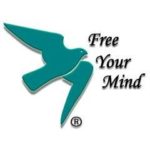 PSYCH-K®
PSYCH-K®
A safe, easy, non-invasive, and an effective way to dissolve resistance to change at the subconscious level. PSYCH-K® allows you to quickly and painlessly change subconscious beliefs that are limiting the full expression of your potential in life. This includes your mental, emotional, physical, and spiritual well-being. A client-friendly approach to “rewrite the software of your mind in order to change the printout of your life.”
PSYCH-K® is powerful and can be used to determine food sensitives, and impart healing benefits on the client.
PSYCH-K is:
- A safe, non-invasive, interactive process of change with a proven record of success for over 25 years!
- A simple, yet very powerful process to change subconscious beliefs that are self-limiting and self-sabotaging
- A unique blend of various tools for change, some contemporary and some ancient, derived from contemporary neuroscience research, as well as ancient mind/body wisdom such
- A ground breaking approach to facilitating change at the subconscious level where at least 95% of our consciousness operates.
- A process that transcends the standard methods of visualization, affirmations, will power, and positive thinking especially effective in the areas of behavioral/habit change, wellness and stress reduction
Decades of research have been conducted on what has been termed the “brain dominance” theory. Findings indicate that each hemisphere of the brain tends to specialize in and preside over different functions, process different kinds of information, and deal with different kinds of problems. Though it is the natural ability to operate simultaneously out of both sides of the brain, life experiences often trigger a dominance of one side over the other when responding to specific situations. The more emotionally charged the experience, the more likely that the conclusion we draw from it will be stored for future reference, and when faced with similar life experiences in the future, we automatically over identify with only one hemisphere of the brain.
Read more: here
I am a Certified PSYCH-K Facilitator (certified in 2017).
Psychokinesiology
Psychokinesiology is a very simple, but revolutionary approach created by Dr. Whisenant to unlock the mysteries of what is going on emotionally and mentally in the subconscious, revealing primary negative emotions or beliefs that are controlling current behavior. Using this tool, we can navigate through our subconscious mind and finds the answers as to what really is running our show.
Psychokinesiology employs the use of applied kinesiology or muscle testing to determine the strength or weakness of a thought, idea or emotion on the body. Through muscle testing you can determine what is going on in the subconscious. The body will either respond positively or negatively to any thought, idea or emotion that it is presented with. The subconscious literally is capable of communicating energetically through the body.
Psychokinesiology is comprised of three principles:
1- It employs the use of cognitive therapy to find the main problem that is confronting the client.
2- It utilizes muscle testing to communicate with the unconscious mind;
3- It clears the problem initiating change
4- It brings the change forward in time.
Psychokinesiology was developed to add scientific credence to the use of muscle testing and as a departure from any kind of “new age” ideas one may use. There has been some scientific research on muscle testing outside of the chiropractic journals. Psychokinesiology does not discuss “energy”, but focuses on the psychological side of healing. It views the physical healing in the body as resulting from a “convincer strategy.” This means when the client sees there is a change occurring on the physical level with a difference in the muscle’s reaction to a particular idea s/he will be convinced that change has occurred on the unconscious level. This will then motivate the client to look, albeit unconsciously at first for ways to continue the change throughout his/her life.
Psychokinesiology integrates western and eastern philosophical paradigms and clinical protocols. It is used as a therapy within a mind-body-spirit orientation. It does adhere to the fact that dysfunctional assumptions and beliefs can be the root of illness.
Nutrition Response Testing (NRT)
A non-invasive system of analyzing the body to determine the underlying causes of illness and non-optimum health. The first step involves a full health history, symptom survey, a Health Express Analysis computerized test and the Nutrition Response Testing℠ itself. The actual procedure is simple and direct, with your body providing all the information and feedback needed.
We use the extraordinary ability of the human cells and tissues to bring about healing and health improvements bringing about a Total Health Restoration for you and your entire family. The body has the full potential to fully repair itself, when given the correct nutrients.
As the Doctor or Practitioner is using the Nutrition Response Testing she is testing your body’s neurological reflexes. These reflexes are the nervous system’s way of telling her what and how your organ’s and other body systems are doing because the nervous system regulates the body’s functions for each and every organ. The testing includes all organs, glands, joints, muscles and the entire body.
These reflexes are tested on the surface of the body and then the findings are analyzed and your personal Total Health Restoration program will be designed.
Autonomic Response Testing (ART)
Autonomic Response Testing is a simple, yet highly effective biofeedback assessment technique used to determine disturbances in your body and possible remedies. It is an advanced form of muscle testing. ART is non-invasive, non-electronic, and can be used to assess people of any age. It is a most valuable functional assessment tool in determining the root cause of health disturbances.
The “autonomic’ in ART refers to the autonomic nervous system. This is the part of the nervous system responsible for all the automatic functions of your body such as your heartbeat, breathing, digestion, healing, etc. Detectable and treatable problems within this part of your nervous system are present is all body dysfunction (such as allergy) and all chronic diseases.
ART was developed by Dr. Dietrich Klinghardt, who blended the muscle testing of American Applied Kinesiology with the understanding of the anatomy and physiology of German Neural Therapy. The result is a highly structured muscle testing biofeedback system designed to give reliable and reproducible results.
ART is just one of the functional assessment tools that may be used by the Integrative practitioner along with conventional medical tests and sound medical judgement to develop an Integrative medical strategy.
More on ART (opens a link to a 3rd party site)
Quantum Neurological Reset Therapist (QNRT)
Based on the knowledge that unresolved emotional trauma and life patterns lead to imbalances in our lives, eventually causing anything from troubled relationships to major disease. Emotional shocks and traumas that you experience create challenging dynamics in your nervous system. These events or life patterns simultaneously imprint on your brain, tissues, and psyche.
The information is often buried in your subconscious mind and leads to dysfunction in the way you perceive and navigate your life. It also changes the way your body functions, leading to imbalances and disease.
QNRT works to resolve emotional shock, trauma events, and life patterns. By letting go of limiting patterns and emotional wounds, relationships transform, hope is restored, and symptoms of illness can vanish. QNRT can provide resolution and healing while improving your overall quality of life. If you want to change the way you see yourself and your life, transform your relationships, let go of things you have been unable to accept, and see how the illnesses in your life can be rooted in childhood wounding and self-devaluating beliefs, QNRT is right for you.
A proprietary protocol designed to initiate a quantum shift in the nervous system by resetting the brain’s response to emotional triggers for both past and present emotional trauma and stress.
“Doctors often tell me the emotional element to illness is an area where they can not seem to break through and help their clients. This is where QNRTTM has helped when all other techniques and therapies fail ”
NAET® – Nambudripad’s Allergy Elimination Techniques
Discovered by Dr. Devi S. Nambudripad in November of 1983. Nambudripad’s Allergy Elimination Techniques, also known as NAET, are a non-invasive, drug free, natural solution to alleviate allergies of all types and intensities using a blend of selective energy balancing, testing and treatment procedures from acupuncture/acupressure, allopathy, chiropractic, nutritional, and kinesiological disciplines of medicine.
One allergen is treated at a time. If you are not severely immune deficient, you may need just one treatment to desensitize one allergen. A person with mild to moderate amount of allergies may take about 15-20 office visits to desensitize 15-20 food and environmental allergens.
Basic essential nutrients are treated during the first few visits. Chemicals, environmental allergens, vaccinations, immunizations, etc. are treated after completing about ten basic essential nutrients. NAET can successfully alleviate adverse reactions to egg, milk, peanuts, penicillin, aspirin, mushrooms, shellfish, latex, grass, ragweed, flowers, perfume, animal dander, animal epithelial, make-up, chemicals, cigarette smoke, pathogens, heat, cold, other environmental agents. It may take several office visits to desensitize a severe allergen
“Specialized” Kinesiology
During the 1970’s, -80’s and -90’s several other “kinesiologies” have been formed outside the Applied Kinesiology and are now part of the “Specialized Kinesiology” or “Energy Kinesiology” family. Some of them are called: “Touch for Health”, “Educational Kinesiology”, “One Brain”, “Applied Physiology”, “Biokinesiology”, “Applied Neurogenics”, “Blue Print”, “PKP”, “Transformational Kinesiology”, “Hyperton-X”, etc., etc.
Thousands of people, mainly in Europe, Australia, New Zealand and USA/Canada now uses Specialized Kinesiology as a profession of its own or as part of other alternative therapies or natural medicine.
Kinesiologic Medicine, KM
All Applied Kinesiology-AK, is also part of Kinesiologic Medicine, but all Kinesiologic Medicine is not part of AK. The term “Kinesiologic Medicine” was first created by the American/Italian chiropractor Anthony Gil in Milano. It refers to the techniques and different kinesiology methods outside the officially accepted techiques of Applied Kinesiology (“non-official ICAK”).
The founders of the different branches of Kinesiologic Medicine are often members of the International College of Applied Kinesiology, ICAK. Kinesiologic Medicine is used today by many professional therapists like chiropractors, medical doctors, acupuncturists, naturopaths, osteopaths, nutritional therapists.
Kinesiology, Academic Kinesiology, Biomechanics, Exercise Physiology
Applied Kinesiology is sometimes mixed up with Traditional Academic Kinesiology (incuding biomechanics, exercise physiology, physiotherapy).
It is easy to get confused and mix it up with Applied Kinesiology and Specialized Kinesiology, but it is not the same modality! We both use the same word “kinesiology”, but it is not the same thing. Traditional Kinesiology work with Biomechanics, Exercise Physiology and Psychomotor Behavior.
.
.
Q- What is the difference between Specialized/Energy Kinesiology and Applied Kinesiology and Kinesiologic Medicine?
One main difference, is that Specialized/Energy Kinesiology often uses a “Straight Arm muscle test” and ask verbal “Yes and No” questions.
Applied Kinesiology/Kinesiologic Medicine does not work with verbal questions and uses hundreds of different muscle tests in the body.
Applied Kinesiology/Kinesiologic Medicine often puts focus on the structural and nutritional acpects.
Specialized/Energy Kinesiology often puts focus on the mental/emotional and energy aspects.


